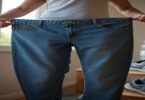Turning 40 can feel like crossing an invisible line suddenly, the weight that used to melt off with a little effort now clings stubbornly to your body. You’re eating well, moving more, maybe even skipping dessert, yet the scale barely budges. Sound familiar? You’re not alone.
As we age, our bodies undergo subtle but powerful changes that make weight loss more challenging than it used to be. Hormones shift, metabolism slows, and lifestyle demands often leave less time for self-care. But harder doesn’t mean impossible.
In this article, we’ll unpack the real reasons why shedding pounds after 40 feels like an uphill battle and reveal the strategies that actually work. No gimmicks, no quick fixes just science-backed solutions designed for the realities of midlife.
Why Does Weight Loss Get Tougher After 40?
Many people notice that what worked for them in their 20s or 30s skipping meals, a quick detox, or cutting carbs suddenly doesn’t have the same effect after 40. The reasons are biological, hormonal, and lifestyle-driven.
1. Slower Metabolism
- Resting metabolic rate declines with age, partly due to loss of lean muscle mass.
- Even burning 100 fewer calories per day adds up to 10 lbs of weight gain per year if eating habits stay the same.
2. Hormonal Shifts
- Women experience perimenopause/menopause; estrogen decline changes fat distribution.
- Men experience a gradual drop in testosterone, affecting muscle retention and fat storage.
- Both sexes become more prone to insulin resistance, leading to higher belly fat.
3. Muscle Loss (Sarcopenia)
- From age 30, people lose 3–8% of muscle mass per decade.
- Less muscle = fewer calories burned at rest + lower strength for activity.
4. Lifestyle Factors
- More responsibilities (career, caregiving, parenting) reduce time for exercise and meal prep.
- Higher stress and poorer sleep increase cortisol, which encourages fat storage.
5. Gut Health Changes
- Aging impacts gut microbiome diversity, affecting digestion, inflammation, and weight regulation.
What Actually Works After 40
1. Strength Training is Non‑Negotiable
- Lifting weights or bodyweight strength training 2–4 times/week preserves muscle and metabolism.
- Focus on compound moves: squats, deadlifts, push‑ups, rows.
- Add progressive overload (gradually increasing resistance).
2. Protein with Every Meal
- Aim for 25–35 g per meal.
- Supports muscle repair and satiety.
- Choose lean meats, fish, eggs, Greek yogurt, legumes, tofu.
3. Smart Cardio (Quality > Quantity)
- 150 min/week of moderate activity (walking, cycling).
- 1–2 sessions of HIIT (High‑Intensity Interval Training) for fat‑burning efficiency.
- Mix in enjoyable activities (dancing, hiking, swimming) to stay consistent.
4. Manage Stress & Sleep
- Prioritize 7–9 hours/night; protect bedtime like an appointment.
- Try breathwork, meditation, journaling, or nature walks to lower cortisol.
- Better recovery = better hormone balance + appetite control.
5. Eat More Whole Foods, Less Processed
- Focus on fiber‑rich vegetables, fruits, whole grains, legumes.
- Reduce added sugars, refined carbs, and alcohol.
- Stay hydrated—thirst is often mistaken for hunger.
6. Rebuild Gut Health
- Include prebiotics (bananas, onions, oats) and probiotics (yogurt, kefir, fermented foods).
- Consistent fiber intake (25–30 g/day) helps regulate digestion and weight.
7. Rethink Calorie Deficits
- Extreme restriction backfires by slowing metabolism further.
- Moderate deficit (200–400 calories/day) combined with strength training is more effective.
- Track progress with body composition, energy, and strength not just the scale.
Sample Weekly Plan
Strength Training (3x/week)
- Squats, push‑ups, rows, hip hinges, core stability (30–40 min).
Cardio (2–3x/week)
- Brisk walks, cycling, swimming, or short HIIT intervals (20–40 min).
Lifestyle Habits
- 10‑minute morning mobility routine.
- Consistent sleep/wake times.
- Meal prep on weekends.
Quick Wins for Busy People Over 40
- Swap soda for water or sparkling water.
- Add a veggie at every meal.
- Walk 5–10 minutes after eating to improve blood sugar.
- Do 2–3 sets of bodyweight moves (squats, push‑ups, planks) during TV time.
Conclusion
Weight loss after 40 is harder but not impossible. The key is shifting the approach: build muscle, focus on protein and whole foods, manage stress and sleep, and stay consistent with realistic habits.
Remember: You don’t need extreme diets or endless cardio. Strength, smart nutrition, and recovery are your biggest allies for a leaner, healthier, and more energetic life after 40.






